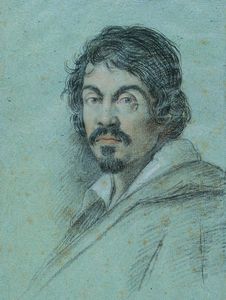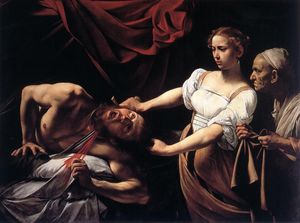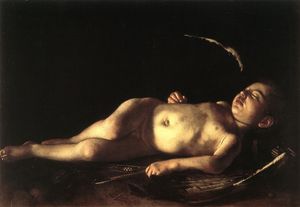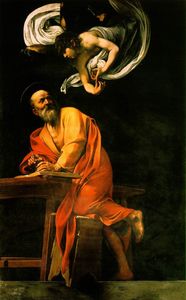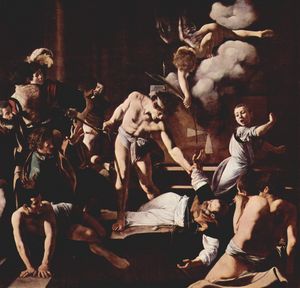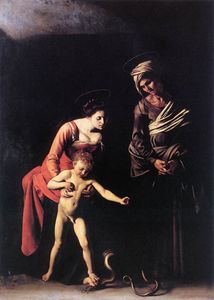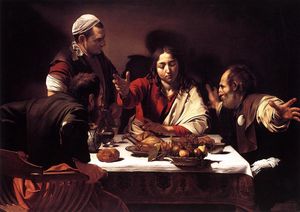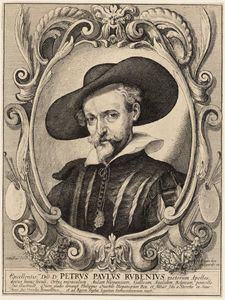Caravaggio Style and Technique
- Full Name:
- Michelangelo Merisi de Caravaggio
- Short Name:
- Caravaggio
- Date of Birth:
- 29 Sep 1571
- Date of Death:
- 16 Jul 1610
- Focus:
- Paintings
- Art Movement:
- Baroque
- Hometown:
- Milan, Italy
- Caravaggio Style and Technique Page's Content
- Introduction
- Style
- Method
Introduction
Caravaggio's style of painting is easily recognizable for its realism, intense chiaroscuro and the artist's emphasis on co-extensive space.
Following the evolution of Caravaggio's paintings is almost like a visual history of his life: from his simple, humble beginnings in his paintings of genre scenes, still-lifes and using himself or his roommate as a model, to his meteoric rise to success around 1600 and his large-scale, magnificent commissions, to the darkest of paintings during his last years as a murderous fugitive.
Caravaggio Style
Caravaggio's first known paintings date from his arrival in Rome in 1592. During these first years, he was completely destitute and painted small genre scenes, self-portraits and still-lifes to earn money on the open market. The main characteristics of paintings from this period include neutral backgrounds, emphasis on still-life subjects and mistakes in proportion.
From 1595 onwards, Caravaggio's career was boosted when the influential Cardinal del Monte welcomed him into his court. The young artist executed paintings for the Cardinal and took advantage of his connections to garner prime commissions from Rome's wealthiest patrons and collectors.
His works focused on effeminate young men and religious scenes. The artist's compositions became more complex and contained various characters. Additionally Caravaggio's pictures became darker during this time.
1600-1606:
In 1599, Cardinal del Monte used his influence to secure Caravaggio his first major commission: the decoration of the Contarelli Chapel. These three paintings showing scenes from the life of St. Matthew constituted Caravaggio's triumphant (and controversial) bursting onto the Roman art scene.
The commissions came pouring in after 1600, despite Caravaggio's difficult temper, problems with the law and soaring prices. This stage in his career saw the artist creating many religious works with larger and more complex arrangements. The artist had clearly solved his early compositional problems.
1606-1610:
In 1606, Caravaggio had to flee Rome with a price on his head after committing a murder. From 1606-10, he was constantly on the run, from Naples, to Malta, to Sicily, painting all the way. During this time of intense fear and personal trauma, Caravaggio's paintings reached the ultimate in darkness and despair. Focusing on religious subjects and portraits his works were grim, somber and unsettling.
Realism:
Caravaggio's intense level of realism was hardly appreciated by his peers. The thinkers behind the Council of Trent wanted art to be more natural than the Mannerist fantasies that had been in style, but Caravaggio went above and beyond this call.
This artist shows everything, from dirty fingernails, to the dirty bottoms of feet, to the bruises and worm holes on apples and the holes in pierced ears.
Such details were not befitting a decorous representation of sacred personages. A Cardinal's secretary described one Caravaggio painting, the Madonna dei Palafrenieri, thusly: "In this painting there are but vulgarity, sacrilege, impiousness and disgust... one would say it is a work made by a painter that can paint well, but of a dark spirit, and who has been for a lot of time far from God, from His adoration, and from any good thought..."
Art historians have long speculated as to the source of Caravaggio's realism. Art historian Helen Langdon suggests that the unprecedented naturalism that marked Caravaggio's mature style most likely had its roots in his training as a young artist: there was a markedly naturalist trend in the art of the Lombardy region and Peterzano may have encouraged the young Caravaggio to study from nature.
Caravaggio Method
What is chiaroscuro?
Chiaroscuro is an Italian term meaning referring to the contrast of light (chiar) and dark (oscuro) in an artwork.
-

Bellori on Caravaggio:
"Caravaggio's style corresponded to his physiognomy and appearance; he had a dark complexion and dark eyes, and his eyebrows and hair were black; this coloring was naturally reflected in his paintings."
-

Caravaggio's style wasn't the only revolutionary thing about his paintings. His working methods were equally atypical.
Chiaroscuro:
One art historian famously said that Caravaggio put the "oscuro" in chiaroscuro. His paintings are almost always recognizable for the dramatic contrast between an intensely dark and somber background and an interest in playing with the effects of light.
Co-extensive space:
Caravaggio had a remarkable talent for extending the action of his composition beyond the picture plane and into the viewer's space. In the Supper at Emmaus, for example, the viewer is almost like a fifth actor in the scene; the arms of the apostle on the right stretches into our space, while the teetering basket of fruit could almost fall to the viewer's feet.
No frescoes:
Most artists working during the Baroque period made a large portion of their incomes from important fresco commissions in churches or other public places. Caravaggio, on the other hand, refused to paint in fresco and only painted oil on canvas for his entire career. It is unknown whether Caravaggio actually lacked the skills to paint fresco, or if this was merely another personal idiosyncrasy.
No drawings:
Most artists executed rough preliminary drawings on the canvas before painting in order to be certain of composition and proportions. Amazingly, x-rays have revealed that Caravaggio did no such thing.
Instead of preparatory drawings, the artist would trace rough indications in the first layers of paint with the handle of his brush, and then go right ahead with the rest of his painting.
During his lifetime and for centuries after, Caravaggio's style and techniques were harshly criticized for their indecorous naturalism, overly dramatic effects and less sophisticated techniques.
Nonetheless, Caravaggio's ability to depict religious scenes with an unprecedented approachability and the most human of feelings and sentiment provided invaluable inspiration for artists throughout the ages, including such masters as Rubens, Velazquez and Rembrandt.

